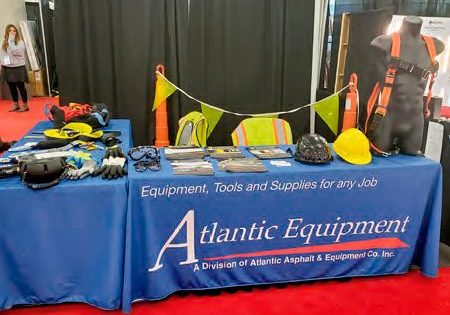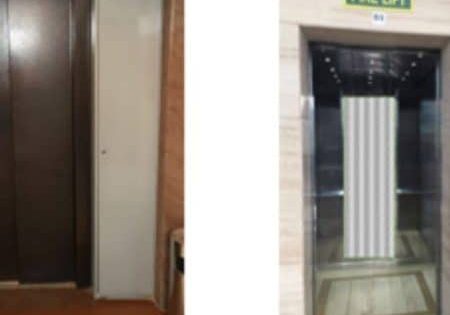An Overview of the Brazilian Lift Market
May 1, 2020

The eighth-largest economy in the world and the sixth-most populated is changing to be prepared for the MERCOSUR and EU trade agreement that will pose challenges and bring opportunities in the lift market.
by Fábio Becker Aranha
The Brazilian elevator market reached its peak in 2014 when new installations climbed to 16,000 units, but, at present, after the 2014 Brazilian economic crisis, that number has fallen to 11,000. However, the worst period is over.
In 2019, a new government took over after 15 years of a left-oriented leadership. At the beginning, the new authorities had to face many problems, but they assert their commitment to economy market rules, an economic freedom act and the approval of a new retirement system. These measures encourage the entrepreneurs with a positive view of economic growth.
The Brazilian gross domestic product growth forecast for 2020 predicts 2.4%, which is not very high, but it means a great difference when compared to -3.8% in 2015 and -3.5% in 2016. Many new building projects are being developed as a result of this change.
Recent Industry History
The great changes in the Brazilian elevator industry took place in 1999-2000 when overseas elevator companies purchased the most important Brazilian companies. Schindler took control of Elevadores Atlas, the biggest Brazilian lift manufacturing and maintenance firm, which was three times bigger than the established Schindler brand in Brazil. thyssenkrupp arrived in the country and purchased Elevadores SÛR and KONE’s local operations. In the same period, Otis bought around 50 small and medium-sized elevator companies and launched a second brand called Elevador Brasil.
The crisis had a negative influence on the lift market so that important new players that had invested in Brazil, especially for the FIFA World Cup and Olympic Games, left the country: for instance, Hyundai fired half its personnel and stopped production in 2016, and Mitsubishi Elevator was sold to Otis in 2017.
Accessibility
In 2017, the elderly population exceeded 30 million, and the prediction for 2060 indicates that a quarter of the population, about 58 million, will be senior citizens. In addition, 15% of the Brazilian population suffers some sort of disability. Federal law requires buildings to be made accessible.
Standards and Certification
In general, Brazil follows the European standards. Some of those standards are published according to the MERCOSUR trade bloc of Argentina, Brazil, Paraguay and Uruguay. They are named with the prefix “MN” (MERCOSUR Norm). Other standards are valid only in Brazil (NBR), such as the Safety Norm for Existing Lifts, which has not yet been published in Argentina. An equivalent to the EN 81-20/-50 standard is coming soon and will be mandatory two years after its publication. Brazil has already adopted EN 81-28’s remote alarm equivalent (NBR 16756), but it is not yet compulsory.
INTI’s ETV (Vertical Transport Test Laboratory) was established in 2012 to technically check lifting elements using the latest safety standards. As of 2015, it is mandated that all lift safety components (domestic and imported) have certification from INTI. This technology laboratory, in Argentina, is the only one able to certify in Latin America.
| Existing Installations | 400,000 |
| Population | 210 million |
| New installations | 11,000/year |
| New installations | 90% international companies 10% local SMEs |
| Maintenance market share | 65% international companies 35% local SMEs |
| Number of personnel | 25,000 |
| City Population (Million) | Metropolitan Population (Million) | |
| São Paulo | 12.0 | 21.3 |
| Rio De Janeiro | 2.5 | 12.3 |
| Belo Horizonte | 2.5 | 5.9 |
| Brasilia–Federal District | 3 | 4.3 |
| Porto Alegre | 1.5 | 4.2 |
| Recife | 1.6 | 4.0 |
| Fortaleza | 2.6 | 4.0 |
Lift Associations
In Europe, there are specific associations of lift maintenance companies. This is not the case in Brazil, where the associations bring together manufacturing, installation and maintenance companies in a similar way to the American National Association of Elevator Contractors.
Despite the economic problems and other difficulties, AEM (MERCOSUR Lift Association) was founded in 2013 as a regional lift association that groups the main entities and other collaborators in the region. Its priorities are to:
- Exchange relevant information among organizations
- Defend skilled labor and technological sovereignty in the region
- Jointly monitor commercial production and industry performance
- Propose measures and policies to the states to promote national value
- Tackle regional training, technology and innovation projects There are three from Argentina: CAFAC (Argentine Chamber of Manufacturers of Elevators and Its Components),
ADIMRA (Metallurgical Industry Association of Argentina) and ITEEA (Institute of Technological Studies and Lift Education). On the Brazilian side, there are three others: SECIESP (Union of Lift Maintenance and Conservation Cos. of the State of São Paulo), SECMIERJ (Union of Lift Companies of Conservation, Maintenance and Installation of Rio de Janeiro) and SECIEMG (Union of Lift Maintenance and Installation companies of Minas Gerais). Unfortunately, there are no associations in Uruguay and Paraguay.
The World Elevator Federation was created in April 2019 and includes AEM. As regards shows, ExpoElevador is the most important exhibition in Latin America. The next edition will be held in São Paulo on March 1-3, 2021.
Foreign Companies
Many foreign lift component companies are already doing business in Brazil. The Italian companies are:
- GMV started business with a local office in 1996 and opened a branch the next year.
- Vegalift had a local office in 2012 and started production in 2014.
- Giovenzana set foot in Brazil with a local office in 2017.
- Draka (Prysmian Group) has a factory.
- Montanari Group has a sales representative.
German companies in the country include:
- Wittur Group opened an office in 1996 and, four years later, established its first factory. It opened a second in 2016 in Londrina (Parana Estate).
- Schmersal has been present in the local market since 1968. It built a factory in Boituva (São Paulo Estate) in 1975.
- Bucher purchased the Brazilian Eco Sistemas in 2013 and started selling imported components. It opened its own production facilities in 2017.
| Existing Installations | 250.000 |
| Population | 45 million |
| New installations | 3,500/year |
| New installations | 85% local/ 15% international companies |
| Maintenance market share | 10% international companies/ 90% Local SMEs |
| Number of personnel | 12.000 |
| Country | Population | Existing Installations | New Installations per year |
| Argentina | 44.938.000 | 250.000 | 3.600 |
| Brazil | 210.458.000 | 400.000 | 11.000 |
| Bolivia | 11.470.000 | 27.000 | 400 |
| Colombia | 50.133.000 | 38.000 | 2.500 |
| Chile | 19.107.000 | 30.000 | 1.500 |
| Ecuador | 17.201.000 | ** | 400 |
| Paraguay | 7.152.000 | ** | 100 |
| Uruguay | 3.600.000 | 14.000 | 250 |
| Venezuela | 32.220.000 | ** | ** |
| Peru | 32.500.000 | 10.000 | 900 |
| Guianas | 790.000 | ** | ** |
| Suriname | 575.000 | ** | ** |
| Total | 430.144.000 | 759.000 | 20.650 |
Spanish companies include:
- Fermator, which built a 4,000-m² factory in 2005 and expanded it five years later to 13,000 m². This year, the firm plans to invest an additional US$5 million.
- Sicor has had sales representatives here since 2012.
- Micelect is present with a sales representative.
- There are two Argentinean companies:
- Adsur began with a distribution center in 2009.
- Avaxon has had a representative since 2008.
Other important companies are Torin Drive (in Brazil since
2012), Danfoss (since 1968, then started selling inverters in 1990) and Yaskawa’s Brazilian branch (since 1974).
EU/MERCOSUR Agreement
The most important piece of news for the future of the lift market is the agreement to be signed between the European Union (EU) and MERCOSUR. Although there is agreement in principle, the texts have not been finalized, signed or ratified. Therefore, it has not yet come into force.[1] Such a good business relationship with promising numbers can bring about great potential because:
- The EU is MERCOSUR’s number-one trade and investment partner.
- The EU exports to MERCOSUR were EUR45 billion (US$50.4 billion) in goods in 2018 and EUR23 billion (US$25.76 billion) in services in 2017.
- The EU is the biggest foreign investor in MERCOSUR, with a stock of EUR381 billion (US$426.7 billion). MERCOSUR’s investment stock in the EU amounts to EUR52 billion (US$58.24 billion) as of 2017.
However, while the relationship is very substantial, both exporters and potential investors face barriers in the MERCOSUR markets. Consequently, the goals of the deal are to remove barriers and help (especially smaller) European firms increase their exports, strengthen workers’ rights, ensure environmental protection and encourage companies to act responsibly.
This agreement represents win/win opportunities and growth for both parties. It can also be quite convenient for small and medium-sized companies.
Reference
[1] Wikipedia. “European Union–Mercosur Free Trade Agreement”
Get more of Elevator World. Sign up for our free e-newsletter.









